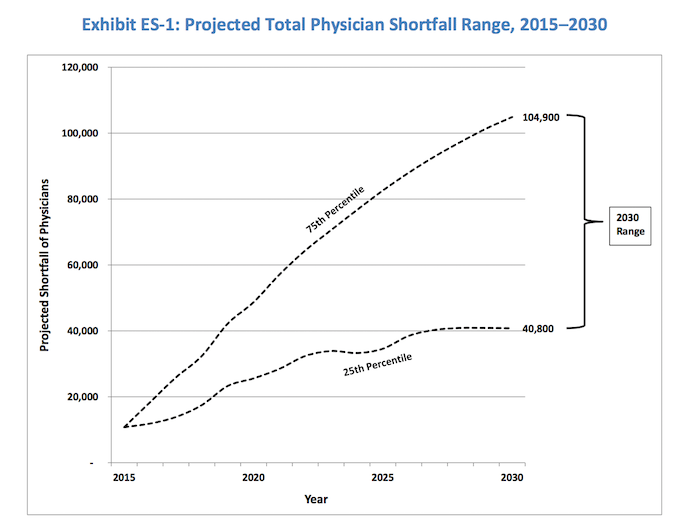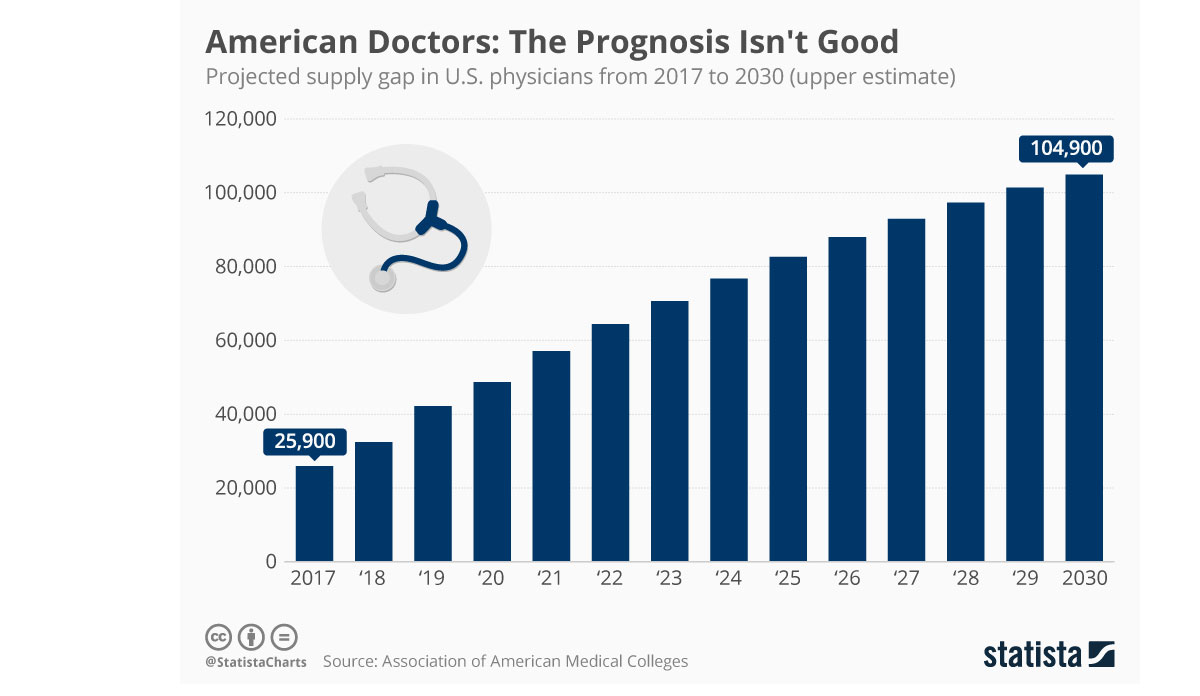For the past three years, the Association of American Medical Colleges (AAMC) has projected that demand for physicians in the United States will increasingly outpace supply by 2030. Their most recently released update projects an even more pressing shortage than their past reports. Given the status quo, the healthcare system faces the challenge of training an extra 40,800 to 104,900 new physicians over the coming decade to fill the projected deficit, with specialists and surgeons in especially high demand.

Photo via AAMC Final Report 2017 Update. Association of American Medical Colleges.
Supply is largely expected to remain consistent. Demand, however, looks poised to rise dramatically. The population is expected to grow by 12%, with the 65 and older population experiencing significantly more growth (55%) than their 18 and under counterparts (5%).
An aging population means an increased demand for physicians that treat the elderly, but of course, doctors are aging too—according to the report, one-third of currently active physicians will be at retirement age within the next 10 years.
The report also presents the ideal scenario in which underserved or uninsured populations gain equal access to health care and insurance — a phenomenon the AAMC calls “health care utilization equity.” Projections for physician need increase by an additional 35,000 to 97,000 depending on increases in coverage. It is important for policymakers to consider that increasing the number of people with insurance does not necessarily increased access to care if there are not enough providers.
Databyte via Niall McCarthy, American Doctors: The Prognosis Isn’t Good. Statista.













